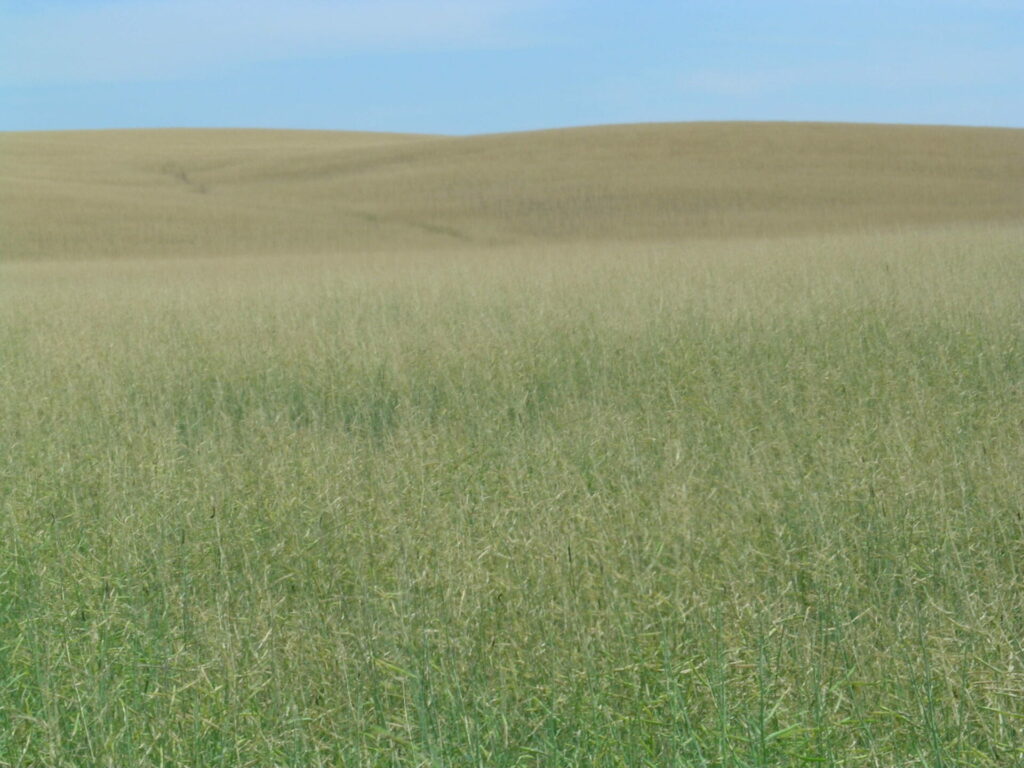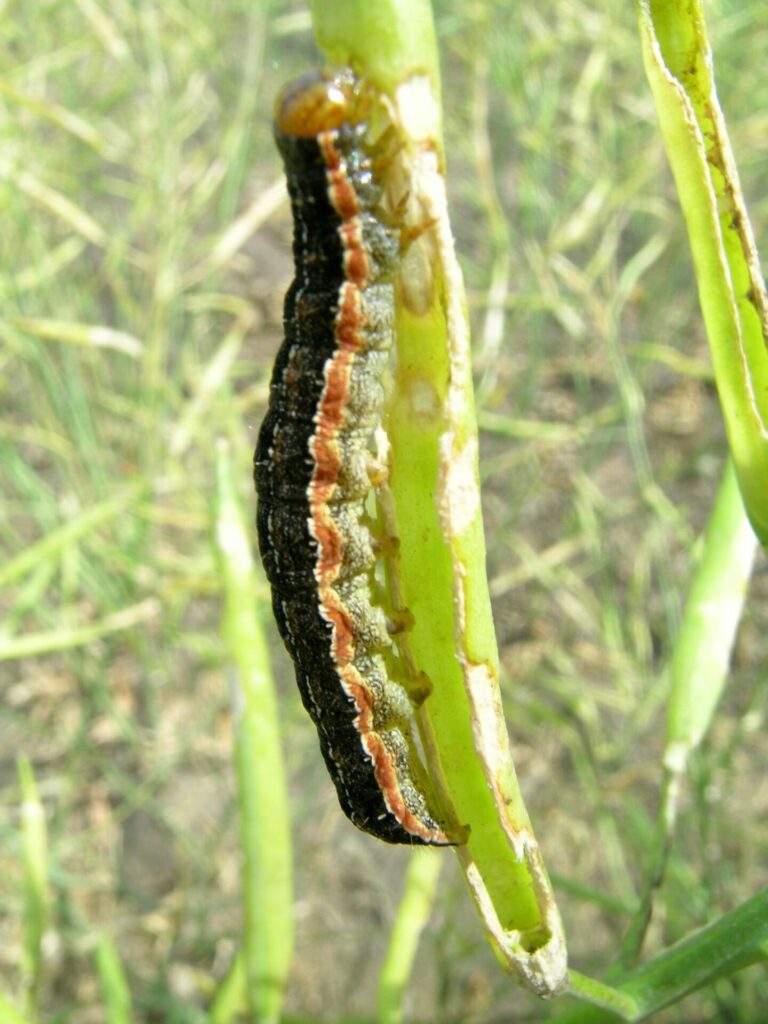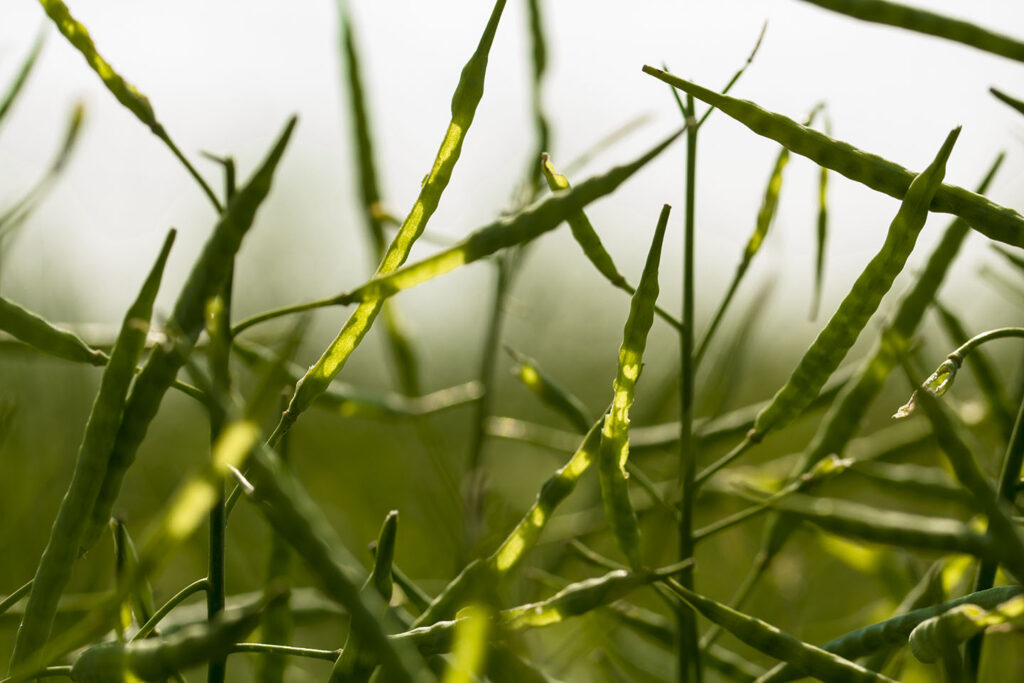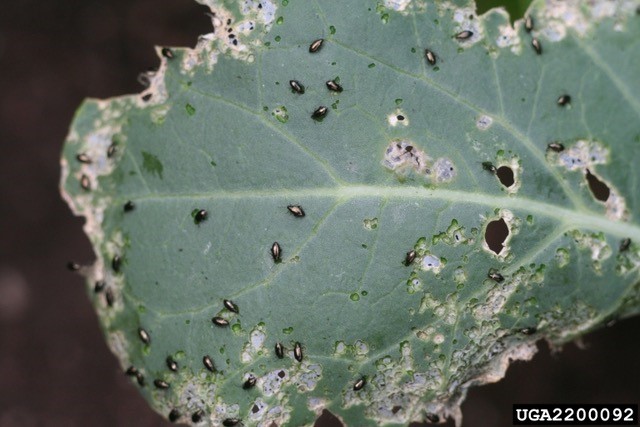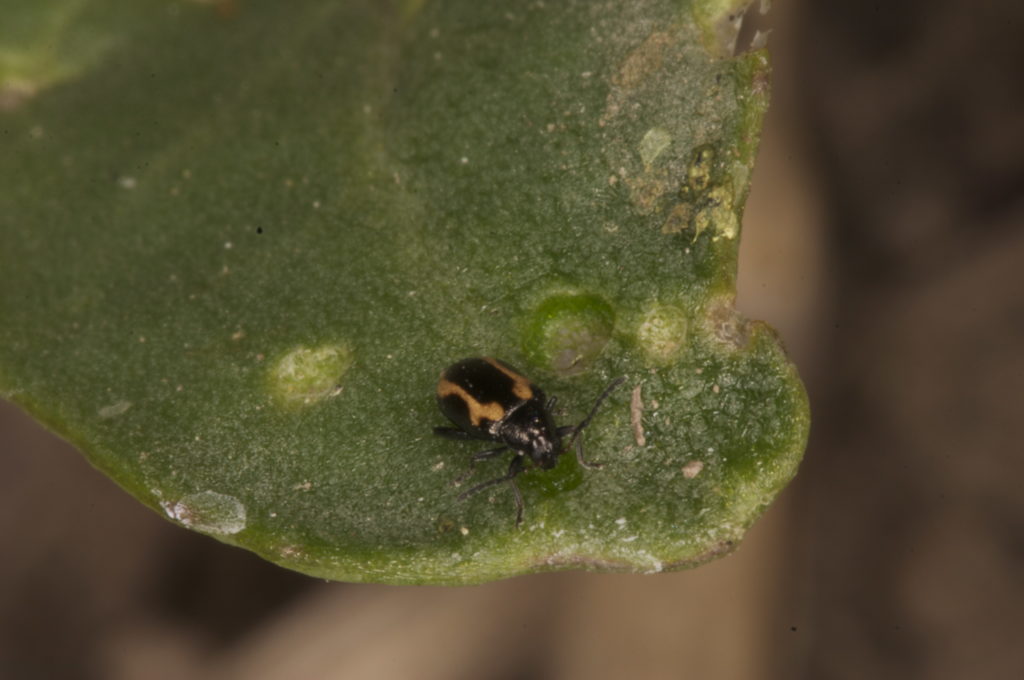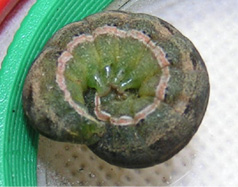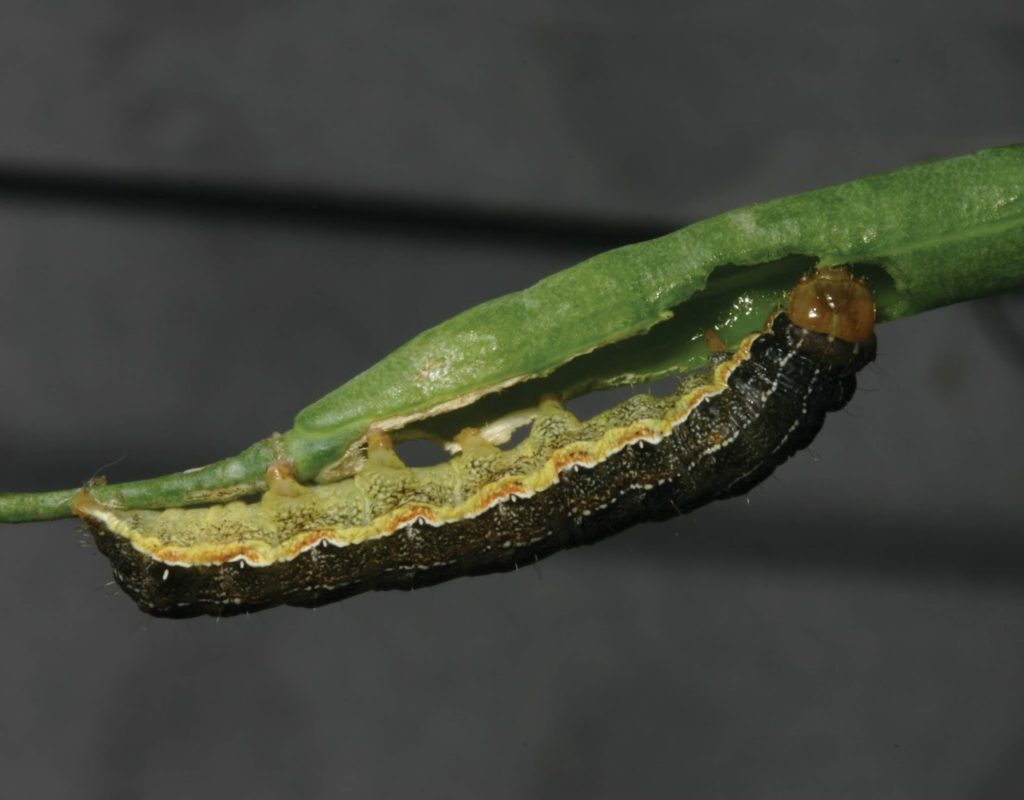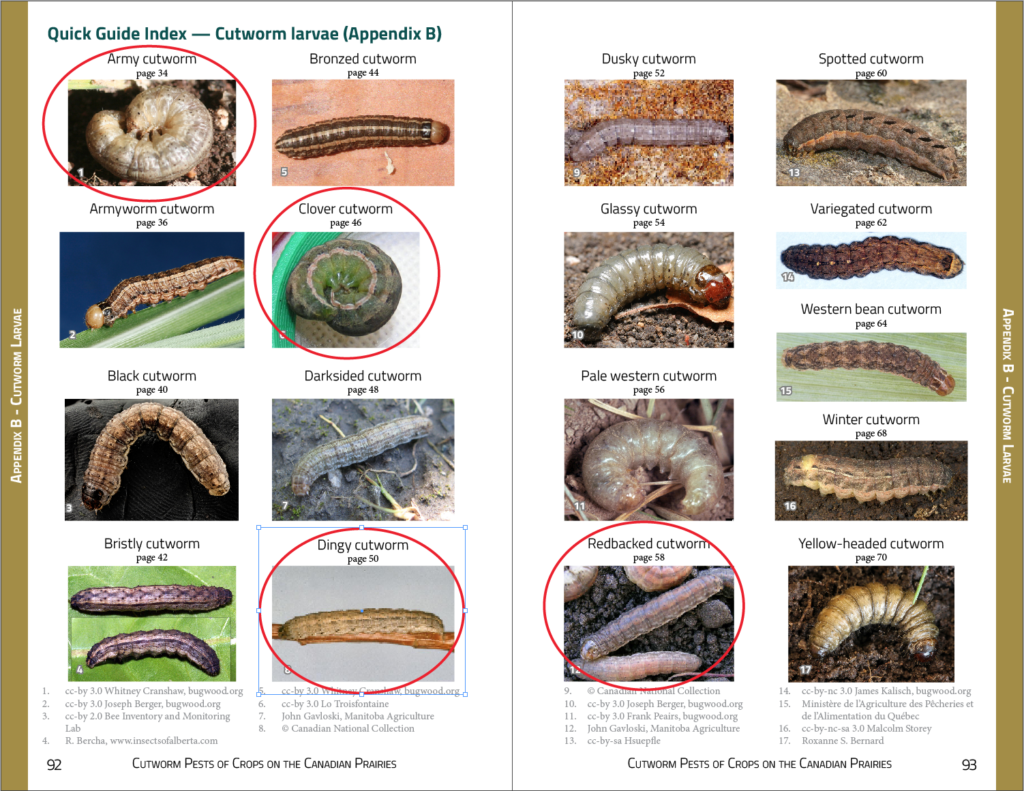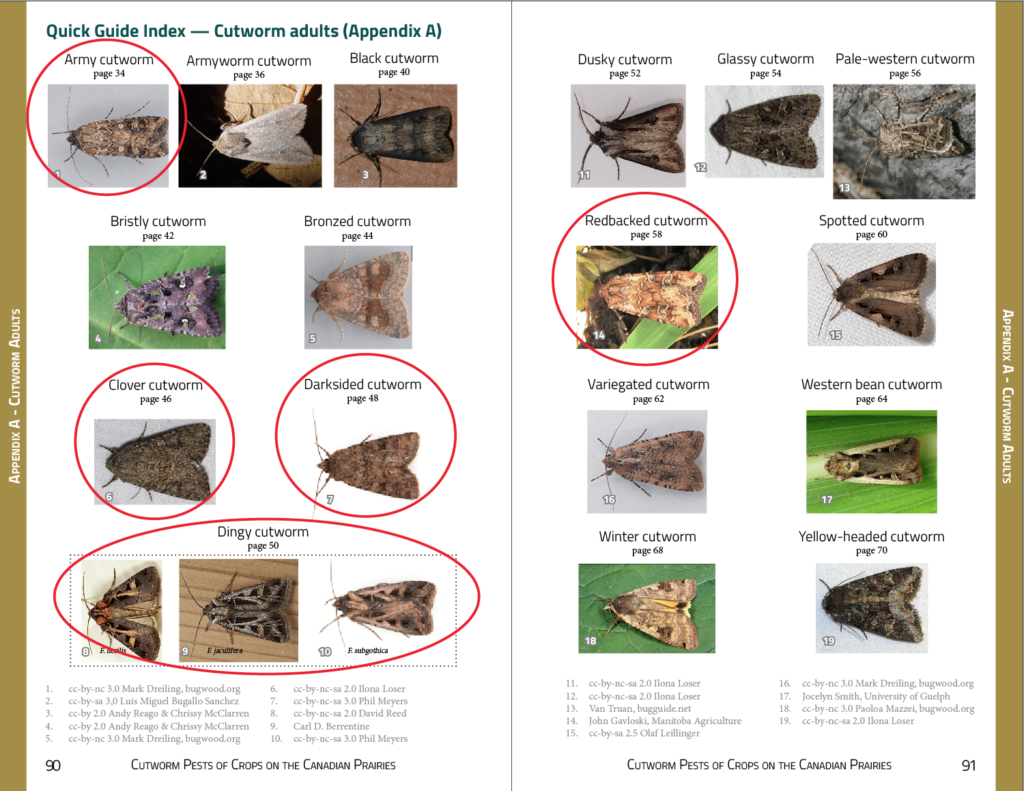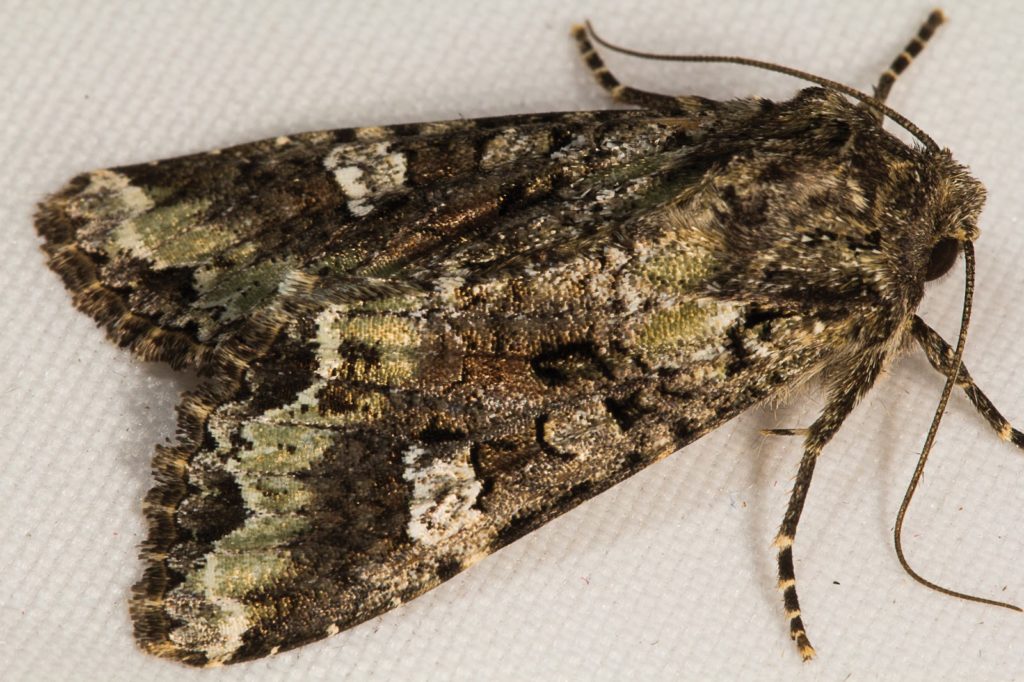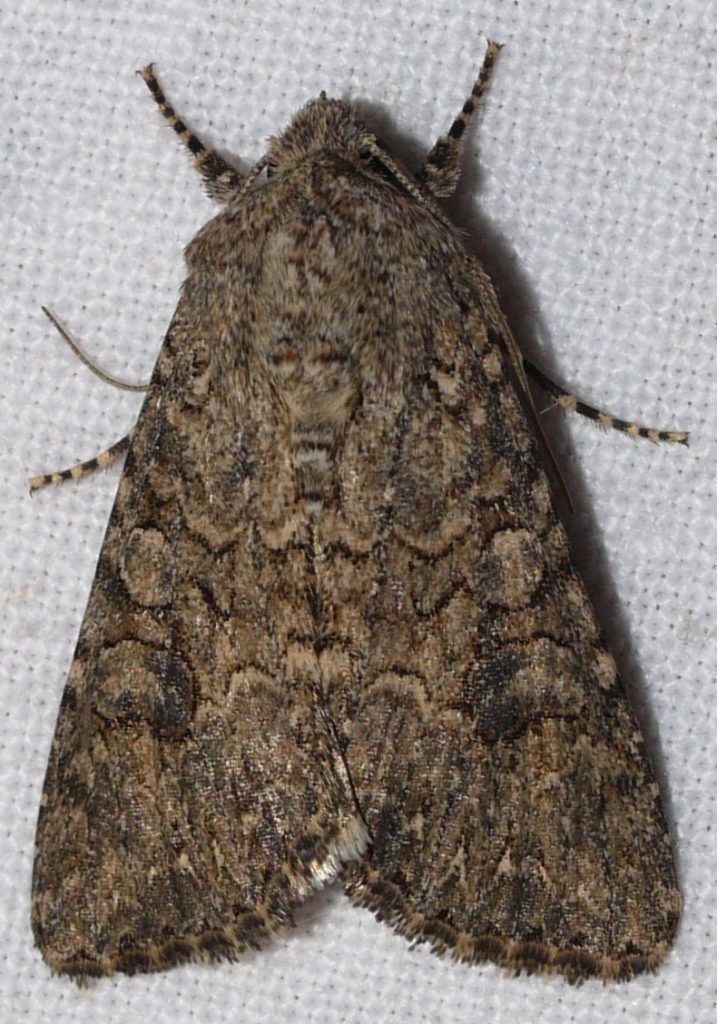Cabbage seedpod weevil, Ceutorhynchus obstrictus, is an invasive alien insect. Cabbage seedpod weevil is present in Alberta, Saskatchewan and Manitoba but it has not yet been detected in the Peace River region. Both the adult and larval stages of cabbage seedpod weevil feed on canola, brown mustard, and wild mustard. Feeding by the larvae generally has a greater impact on crop yields than feeding by the adults.
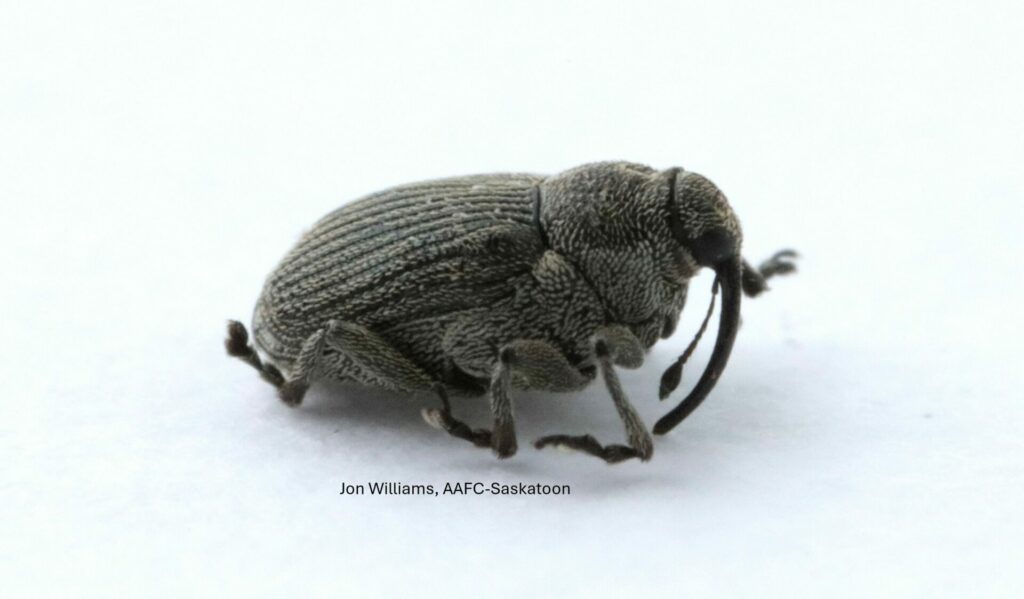
Cabbage seedpod weevil larval feeding results in direct yield loss because the developing larvae consume developing canola and brown mustard seeds inside the pods. Each larva can eat up to 5 seeds during its development. In addition to the direct yield loss caused by the larvae, pods infested by cabbage seedpod weevil are more likely to shatter during harvest and are prone to secondary infection by fungal pathogens.
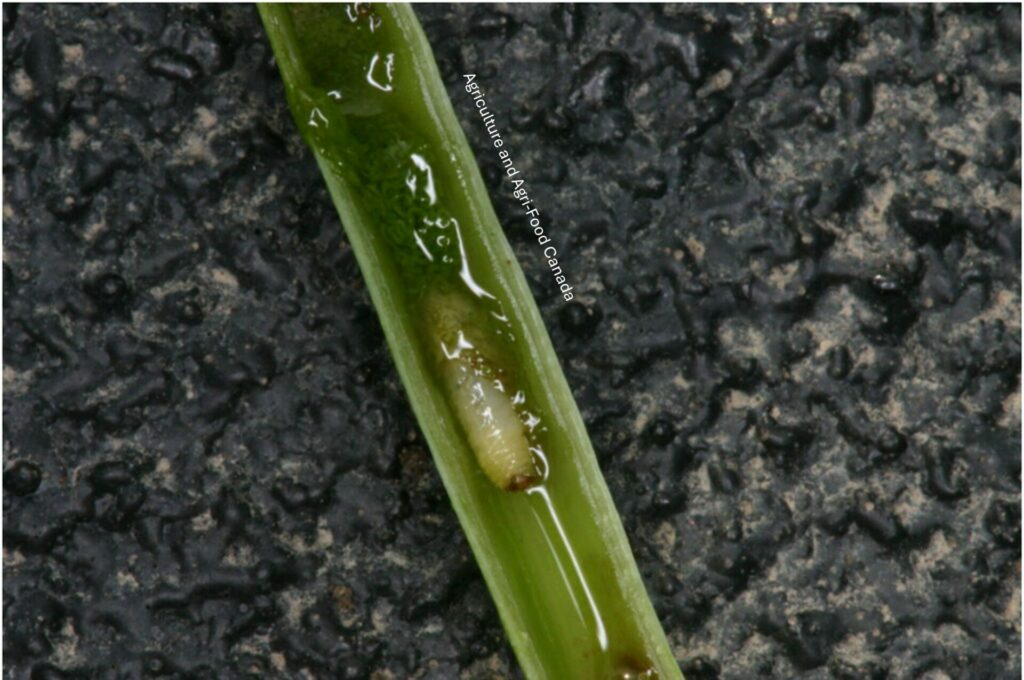
Adult cabbage seedpod weevil will feed on a variety of brassica species, both crops and weeds, but does not use yellow mustard as a host plant. In spring, adult cabbage seedpod weevil can be found feeding in patches of flix weed, hoary cress, stinkweed, and volunteer canola. The adults then disperse into canola and brown mustard crops, where they eat flower buds and flowers. This feeding damage can result in bud-blasting, but does not typically impact crop yields. The new generation of cabbage seedpod weevil adults that emerge in late summer can also feed on pods before the crops are harvested.
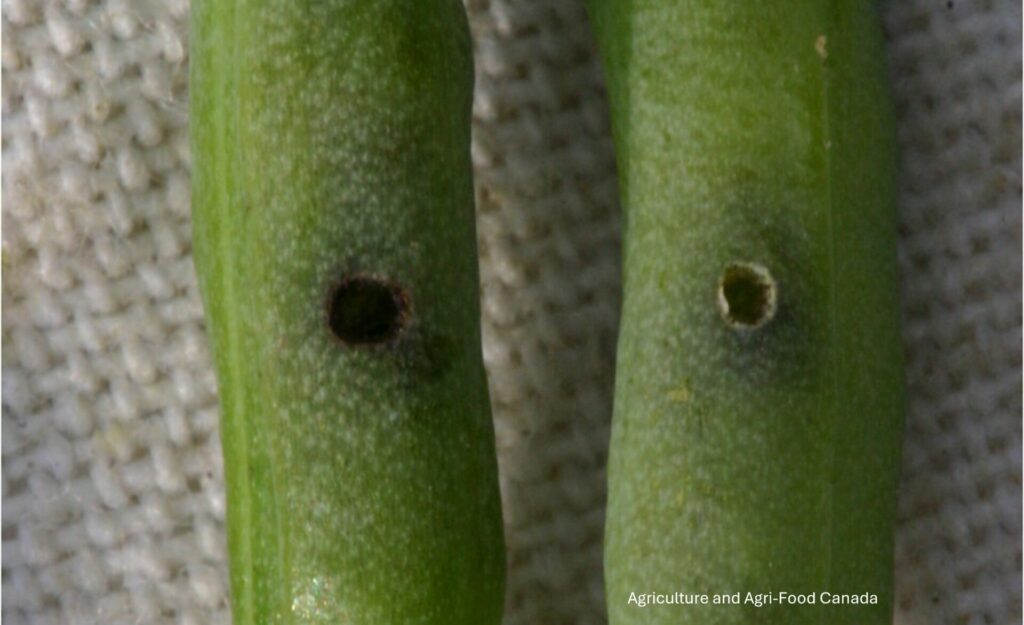
Scout for adult cabbage seedpod weevil as they disperse into canola fields and prepare to lay eggs. When scouting, take ten 180° sweeps at ten locations in the field. Count the adult weevils after each set of 10 sweeps and calculate the average number of adult cabbage seedpod weevil per sweep. Carcamo et al. published new research about cabbage seedpod weevil in 2019, where they found that the economic threshold for cabbage seedpod weevil is 2.5-4 adult weevils per sweep.
The Canola Council of Canada, Alberta Agriculture and Irrigation, and Saskatchewan Ministry of Agriculture have more information about cabbage seedpod weevil and excellent pictures of the damage caused by cabbage seedpod weevil.
For more information about cabbage seedpod weevil, visit previous Insect of the Week articles and find the cabbage seedpod weevil page in Field Crop and Forage Pests and their Natural Enemies in Western Canada, available in English and in French.

